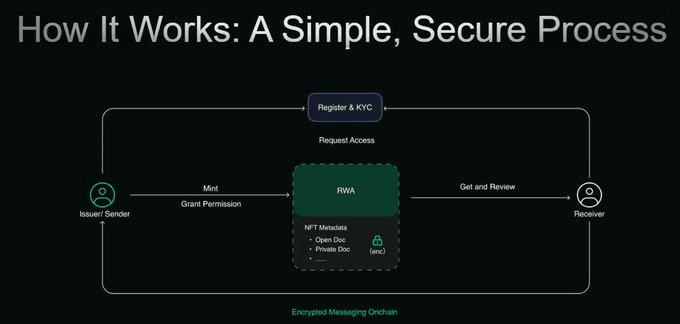I don't know if everyone is aware, but in recent years, the months of June, July, and August have been the drill season for domestic government systems~~
During this time, I am also the busiest.
As the defender, I need to implement various security measures and respond to various emergencies.
To fend off attacks and avoid data leaks, we will set up layers of firewalls, but the last and most critical line of defense is actually data encryption storage.
Why do I say this?
Because if hackers ultimately break into the system, all they can get is a pile of encrypted data that is completely unusable.
This is the significance of data encryption—providing a basic level of security assurance.
So, when I saw the Encrypted Messaging Onchain protocol launched by @mindnetwork_xyz, I couldn't help but be amazed: isn't this the Web3 upgraded version of our 'last line of defense'?
Why do I say it's an upgraded version? Because it doesn't just do data encryption, but has created an on-chain encrypted communication protocol layer that allows wallets to directly send structured and verifiable encrypted information.
It sounds a bit abstract, but it is significant for real-world asset on-chain (RWA).
In the past, a core problem faced by RWA was that the transaction information on traditional blockchains was too simple—only addresses and amounts, lacking semantics, privacy, and unable to meet the compliance and auditing needs of the real world.
Moreover, on-chain data is inherently public and transparent, so many sensitive pieces of information simply cannot be disclosed; the blockchain itself also lacks structured expression capabilities like #SWIFT messages, making it impossible to attach content such as contracts, identities, purposes, and KYC.
The Encrypted Messaging Onchain protocol is specifically designed to address these issues:
It is based on Fully Homomorphic Encryption (FHE), providing an encrypted semantic layer for on-chain transactions, as if giving a voice to the blockchain while also 'keeping the content secret'.
Specifically, it can achieve:
💎 Each on-chain transaction can carry encrypted metadata, such as invoices, contracts, and credit terms;
💎 Information is encrypted by keys generated by wallets, and can only be decrypted and viewed by authorized parties;
💎 All data and transactions are bound, verifiable, auditable, and tamper-proof;
💎 Combining FHE and ZKP to introduce a true 'end-to-end encryption' experience for Web3.
What does this mean?
It means that RWA finally has a compliant and secure data channel to go on-chain; it means that Web3 is no longer limited to 'public transparency', but can truly take a step towards 'privacy compliance and secure expression'.
Indeed, it is a project I have always been optimistic about.
I was already impressed by the collaboration between @mindnetwork_xyz and ByteDance Alibaba earlier, and I didn't expect them to come up with such a hardcore protocol this time.
I sincerely hope that Web3 has more builders like @mindnetwork_xyz, who can truly work for the progress of the industry!




